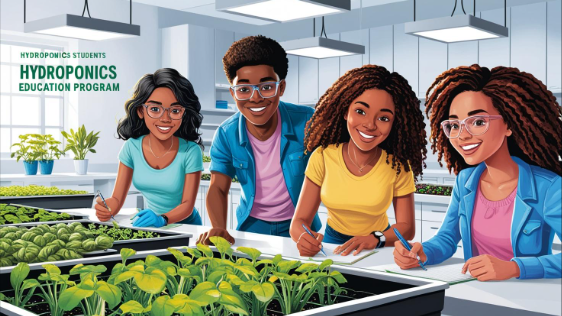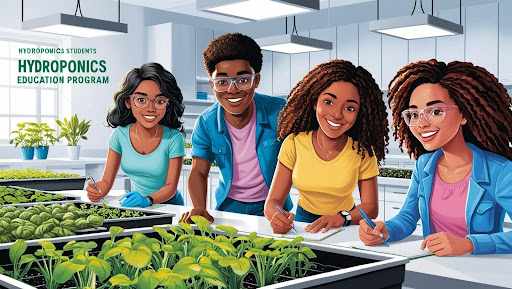
In an era where technology and sustainability are at the forefront of global conversations, hydroponics education is essential to children’s learning experiences. The innovative hydroponics education programs introduce kids to the exciting world of soil-free agriculture, allowing them to grow plants in water-based environments enriched with nutrients. By incorporating hydroponics into STEM (Science, Technology, Engineering, Mathematics) education, children can develop critical thinking skills, a love for the environment, and an understanding of complex scientific concepts—all while having fun!
Why Hydroponics Education Programs Are Ideal for Kids
These programs engage kids in learning that blends practical, hands-on experiences with valuable lessons about technology, biology, and environmental stewardship. Here’s why they’re perfect for young learners:
Fosters Curiosity and Experimentation
Hydroponics education encourages kids to question and explore how plants grow without soil. From understanding how different types of plants thrive in water environments to learning the optimal nutrient combinations, students are constantly testing hypotheses and making discoveries. This approach nurtures curiosity and instills a scientific mindset, where failure becomes part of the learning process. Kids experiment, fail, and then adjust their approach—exactly how real-world science works!
Integrates STEM Concepts Seamlessly
One of the standout benefits of hydroponics education programs is their ability to incorporate various STEM disciplines into a single activity. Children learn about biology as they study how plants absorb nutrients and grow. They engage with technology when exploring hydroponic systems and how they can optimize these systems. Engineering principles come into play when designing their own hydroponic setups, and math is utilized when calculating nutrient solutions and understanding growth patterns. The interdisciplinary nature of hydroponics makes it an ideal STEM activity for kids.
Environmental Education and Sustainability
Hydroponics education also teaches kids about environmental sustainability, offering a concrete example of how farming can be more water-efficient. In traditional farming, water usage is high, but with hydroponics, much less water is needed, making it a more sustainable option. Teaching kids the importance of conserving water and using fewer resources is essential in today's world, where environmental awareness is key to securing a better future.
Hands-On Learning Builds Problem-Solving Skills
Kids love to get their hands dirty, and hydroponics allows them to do just that—without the mess! Through these programs, students get to build and maintain their own hydroponic systems, which means they are actively involved in the learning process. Whether it's assembling grow beds, testing pH levels, or adjusting lighting conditions, kids develop problem-solving skills as they work through challenges. This hands-on learning approach is incredibly effective in keeping children engaged and invested in their projects.
Enhancing Hydroponics Education with Technology
Many hydroponics education programs incorporate technology to take the learning experience to the next level. For example, virtual tools allow students to design and simulate their hydroponic systems before building them in real life. Tinkercad, a popular online 3D design platform, allows children to create digital models of hydroponic setups, encouraging creativity and providing a bridge between the physical and digital worlds. Kids learn about hydroponics, digital design, and engineering principles by integrating such tech-based lessons.
Moreover, hydroponics programs often align with other educational initiatives that promote technological literacy. For instance, students may also be exposed to cybersecurity programs, where they learn how to protect the technological infrastructure they use in their hydroponics systems, such as sensors, automated nutrient delivery systems, and climate control devices. This blending of agriculture with technology sets the stage for a future where kids can confidently navigate both the natural world and the digital realm.
Conclusion
Whether through learning about plant biology, experimenting with engineering designs, or exploring new technology like Tinkercad lessons, kids are gaining valuable skills that will help them succeed in the future. By encouraging curiosity, problem-solving, and environmental awareness, hydroponics education programs prepare children to make a real difference in the world, all while inspiring them to dream big about the possibilities that lie ahead.









Write a comment ...